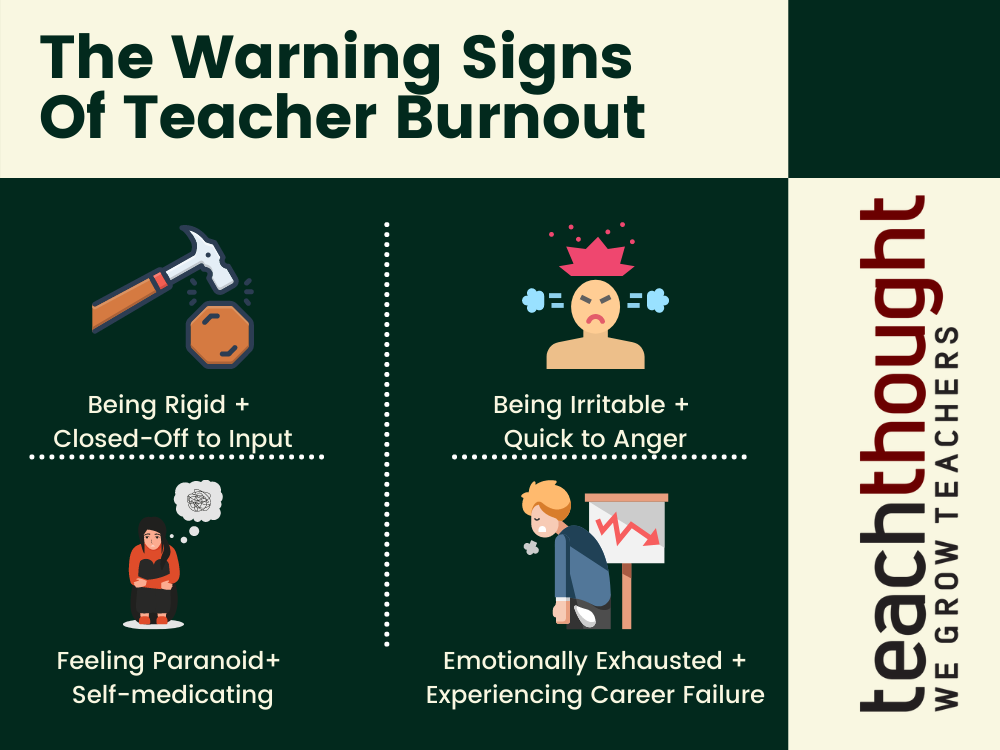
What Are The Warning Signs Of Teacher Burnout?
by Michelle Manno
Teacher burnout, and the resulting attrition (turnover) rate, is one of the largest issues facing the teaching profession today.
NPR Education reports that roughly half a million teachers leave the profession each year. While turnover is expected in any profession, a 2004 study shows that it’s 4 percent higher in teaching than any other profession. You can’t go far without reading an article or recent study that highlights the percentage of first-year teacher attrition, the overwhelming burnout rate of teachers in urban school districts, or the on-going debate focused on the value of teacher evaluation systems.
Teaching has always been an emotional profession, but it seems that the current education climate has created a culture of burnout and stress. What articles about teacher burnout and attrition don’t always address is the fact that while this issue is systemic within the teaching community, it’s not isolated to the profession — and there is help. At last year’s SXSWedu, one panel addressed teacher burnout as a feeling of being “stuck.”
This switch from burnout to “stuck” is significant because it signifies something that has the ability to change. While specific issues in school culture often cause burnout, there are broad ways to address and diffuse these negative emotions. Recent studies are pointing to one tool in particular: practicing self-care.
Before understanding how self-care can address burnout — both in teaching and other service-oriented professions — it’s important to outline the stages of burnout. If these look familiar, you may be a teacher who can benefit from practicing self-care.
Stages and Warning Signs: What Does Teacher Burnout Look Like?
Studies have unpacked what it means to be burned out — providing us with a greater sense of both how burnout is defined and what it looks like. Author and licensed clinical social worker SaraKay Smullens recently outlined what burnout looks like, dividing it into four stages:
Stage 1: Rigidity + Closed-Off to Input
What it looks like: Stage 1 of burnout is often reflective of self-neglect, including failure to stay in bed or stay at home when sick. People ignore warning signs and insist that they are fine despite subtle stressors and changes in demeanor.
Stage 2: Irritability + Quickness to Anger
What it looks like: Stage 2 of burnout takes a toll on your mood and emotional self-regulation. Sleep deprivation, poor eating habits, and failure to adhere to normal routines (like your favorite morning run) can exacerbate these feelings of irritability, depersonalization, and loss of sense of personal accomplishment.
Stage 3: Paranoia + Self-Medication
What it looks like: In the later stages of burnout, extreme fatigue, isolation, and depression are upsettingly common. Recent studies show that 25 percent of teachers are diagnosed with depression. Teachers may turn to self-medication such as alcohol and tobacco to help mitigate these feelings. (Note: If you are experiencing feelings of extreme fatigue, isolation, or depression, learn how you can get help.)
Stage 4: Emotional Exhaustion + Career Failure
What it looks like: Stage 4 of burnout is the leading cause of teacher attrition rates, and drives the on-going teacher turnover in today’s schools. Teacher attrition and burnout is due to mental, physical, and emotional exhaustion — feeling as if you’re stuck but are unable to improve your situation.
Practicing Self-Care to Mitigate Teacher Burnout & Attrition
Whether you’re in Stage 1 or Stage 4 of burnout, or simply want to improve your mental and emotional well-being, practicing self-care is a way to restore work-life balance. Self-care is a holistic look at the body of your mind and soul, reintroducing your personal needs into the equation to align with your personal and professional goals.
There are a lot of resources online that provide teachers, social workers, and other school service professionals with tips for how to practice self-care. But just like within our classrooms, differentiated learning exists within teachers as well — while feelings of burnout may affect us all, practicing self-care looks different for everyone.
Resources To Reduce Teacher Burnout
The following list of in-person and online resources was compiled to help with the goal of using self-care to reduce burnout, attrition, and turnover.
- 25 Tips to Reduce Teacher Burnout | TeachThought
- How Self-Compassion Can Help Prevent Teacher Burnout | GreaterGood
- Mindfulness for Teachers — Considering Teachers’ Social and Emotional Well-Being | HuffPost
Do you actively practice self-care? How do you combat burnout? Comment with your strategies in the comments below — you may be helping a fellow teacher.
Michelle Manno is the managing editor for Inside USC Rossier, the blog community for USC Rossier School of Education’s online teaching degree. A former special education teacher, Michelle is currently earning her Masters in Educational Psychology and Research. She’s passionate about mentoring and support for novice and first-year teachers. Connect with her on Twitter @michellermanno; image attribution flickr usuer newzealndtertiaryeducation